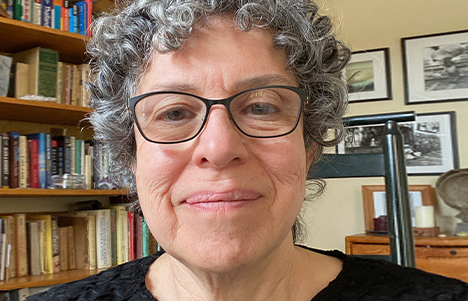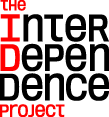
ABOUT THE MEDITATION
This week’s meditation session is led by Elaine Retholtz and the theme is New Beginnings.
The guided meditation begins at 11:15.
For centuries Himalayan practitioners have used meditation to quiet the mind, open the heart, calm the nervous system, and increase focus. Now Western scientists, business leaders, and the secular world have embraced meditation as a vital tool for brain health.
Whether you’re a beginner, a dabbler, or a skilled meditator seeking the company of others, join expert teachers in a 45-minute weekly program designed to fit into your lunch break. Each session is inspired by a different work of art from the Rubin Museum’s collection and includes an opening talk, a 20-minute meditation session, and a closing discussion.
RELATED ARTWORK

The damaru is an instrument played in the right hand by twisting the wrist and causing the strikers to beat against the drum skin. The drum skin of this damaru is made of leather, the strikers are made of semi-precious stones, and the drum itself is made of human bone.
Alternatively, the drum skin can be made of animal hide, or snakeskin and the drum itself can be fashioned of wood. Oftentimes, damarus belonging to the wealthy are made of ivory. Damarus that are made of two skull caps are used exclusively for wrathful Tantric practices.
The Chöd damaru (or chöda) is a specialized form of the instrument, utilized in the Tantric practice of Chöd. This practice involves cutting away defilements and symbolically offering one’s body. The Chöd damaru serves as a tool for severing attachment to one’s being. It is larger and rounder than a typical damaru.
The instrument is often placed next to the two principal ritual objects of Tibetan Buddhism, the vajra and the bell. The dissipating sound of the damaru represents emptiness.
ABOUT THE SPEAKER

Elaine Retholtz has been studying and practicing the Dharma since 1988. In addition to teaching Dharma at New York Insight, she is a certified Mindfulness Based Stress Reduction (MBSR) teacher and a certified MBSR teacher trainer. She is deeply interested in helping students integrate mindfulness into daily life. Elaine is committed to deepening her own understanding of issues of diversity and the way racial conditioning in the United States affects all of us—both as individuals and in relation to the institutions we are a part of, including New York Insight. She’s been involved in New York Insight’s diversity efforts for many years.
This program is presented in partnership with Sharon Salzberg and teachers from the New York Insight Meditation Center, the Interdependence Project, and Parabola Magazine and supported by the Frederick P. Lenz Foundation for American Buddhism.

